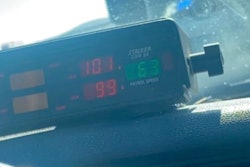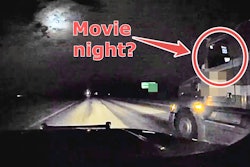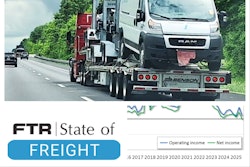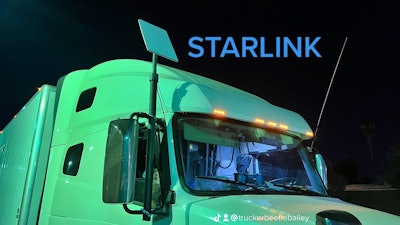
Elon Musk's Tesla Semi might have revolutionized trucking -- in fact, it may never -- but another company of his has already produced at scale a device that could in some ways change the game: Starlink's Dishy McFlatface.
Dishy, as it's commonly called, is a transmitter/receiver for the Starlink network of more than 3,500 small satellites zipping around in low Earth orbit just outside the atmosphere. The device represents something of a step change in connectivity technology: Anyone, anywhere can now access high-speed, low-latency internet with nothing but Dishy, a clear view of the sky and something to plug it into.
Bryan "Beetle" Bailey, a company driver for Arizona-based show hauler Tequila Coach Enterprises, frequently gets passes to sold-out stadium shows as a perk of the job, but on TikTok he's a star in his own right with more than 100,000 followers. As such, he's got a healthy appetite for mobile data service, and to get his fill he uses a modified Starlink dish to provide up to 200 megabits per second while on the road.
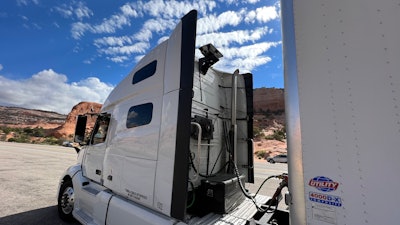 Near Moab, where cell service might not cut it, Starlink proves especially useful. This photo shows the dish in its current configuration, flat-mounted to the sleeper.
Near Moab, where cell service might not cut it, Starlink proves especially useful. This photo shows the dish in its current configuration, flat-mounted to the sleeper.

But usually, that strong internet comes with a hefty price tag: $2,500 for the in-motion hardware. Starlink sells a cheaper unit for $599, but that one is advertised as only for use while stationary. After the initial hardware purchase, it's $150 monthly for unlimited service. For most owner-operators, the in-motion unit probably doesn't justify its cost. But Bailey is part of a growing group of users hacking the stationary dish for a more affordable mobile solution.
It's a bit of a cottage industry, let's say, of people modifying otherwise stationary Starlink dishes to work on the road. The concept is simple. The stationary dish has little motors in it to find the satellites in the sky. The more expensive in-motion model has no such motors and remains flat-mounted to a vehicle's roof. Bailey, as he detailed in a video on his YouTube channel, had the modification done and hasn't looked back since.
"Ever since using the flat mount, I use it full-time for high-speed internet, even while going down the road," he said. 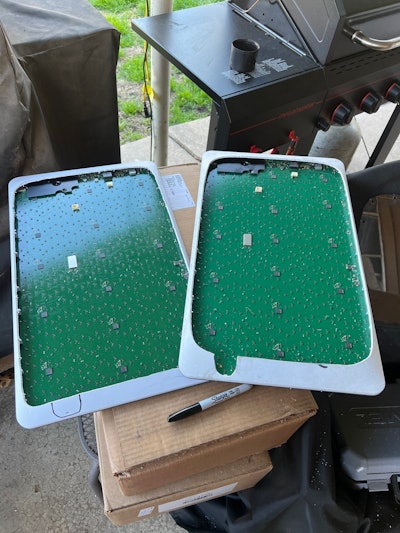 Two Starlink Dishy devices are shown here with the backs cut open and motors removed, ready to be flat mounted to the truck. The installer in Bailey's video has clearly done dozens of jobs like this.
Two Starlink Dishy devices are shown here with the backs cut open and motors removed, ready to be flat mounted to the truck. The installer in Bailey's video has clearly done dozens of jobs like this.
The dish does have one obvious flaw -- it needs a view of the sky. If he's under a bridge, or parked under a stadium as the case often may be, there's no connection. Starlink's dishes are heated, though, and they'll shed any ice and snow.
"Sometimes it cuts in and out, but I'd say it's 98% coverage when it's turned on going down the highway," he said.
At $150 a month, Bailey says it's barely any more expensive than his old setup, where he paid $125 a month for, two separate hot-spot devices because he "runs the data out of them so quick. ... I’ll pick up in Los Angeles and take stuff over to New Jersey, but I'm not around big cities every time I shut down," he said. "I'll upload videos, watch movies, play my PS5, or download updates for the GPS."
[Related: POLL: Movies/screens while driving? What's your bedrock take on the practice?]
When he relied on cell coverage and hot spots, Bailey said the signal would often interrupt the GPS downloads and he'd "have to wait for real WiFi" somewhere in town. Keep in mind, even a hot spot from a major carrier relies on cell towers reaching you. Starlink, on the other hand, just needs to see the sky.
Now with strong WiFi from Starlink wherever he goes, Bailey said he's been able to cut back the data he pays for on his cell phone plan.
Often Bailey's connectivity on the road earns him viral posts on TikTok, where his dashcam videos and other accounts of life on the highway comprise some of his most-viewed content.
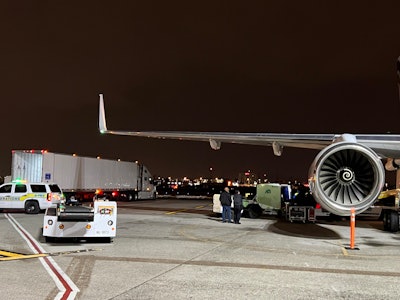 Bailey gets loaded with concert gear on the tarmac of Pheonix Sky Harbor Airport. A bit like the 'Beetles'?
Bailey gets loaded with concert gear on the tarmac of Pheonix Sky Harbor Airport. A bit like the 'Beetles'?
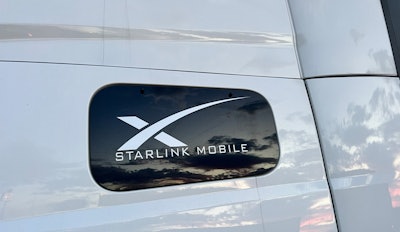 For operators with big mobile-data needs on the road, Bailey recommends Starlink, and says he knows of at least five or six other haulers with a similar setup.
For operators with big mobile-data needs on the road, Bailey recommends Starlink, and says he knows of at least five or six other haulers with a similar setup.
Got connectivity tips on the road? Other hacks to stay online for less? Shoot me an email at [email protected]




